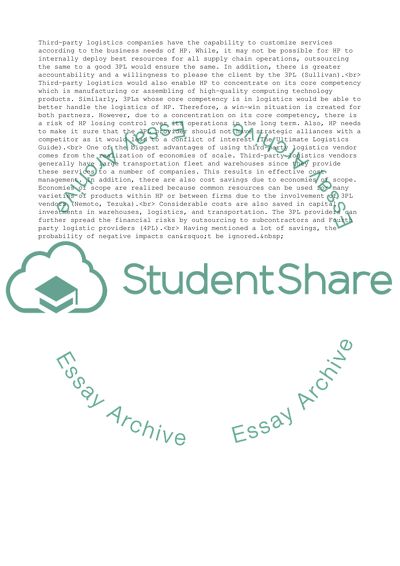Cite this document
(Supply Chain and Logistics Management and Strategy: HP Assignment, n.d.)
Supply Chain and Logistics Management and Strategy: HP Assignment. Retrieved from https://studentshare.org/management/1581376-supply-chain-and-logistics-management-and-strategy
Supply Chain and Logistics Management and Strategy: HP Assignment. Retrieved from https://studentshare.org/management/1581376-supply-chain-and-logistics-management-and-strategy
(Supply Chain and Logistics Management and Strategy: HP Assignment)
Supply Chain and Logistics Management and Strategy: HP Assignment. https://studentshare.org/management/1581376-supply-chain-and-logistics-management-and-strategy.
Supply Chain and Logistics Management and Strategy: HP Assignment. https://studentshare.org/management/1581376-supply-chain-and-logistics-management-and-strategy.
“Supply Chain and Logistics Management and Strategy: HP Assignment”, n.d. https://studentshare.org/management/1581376-supply-chain-and-logistics-management-and-strategy.


